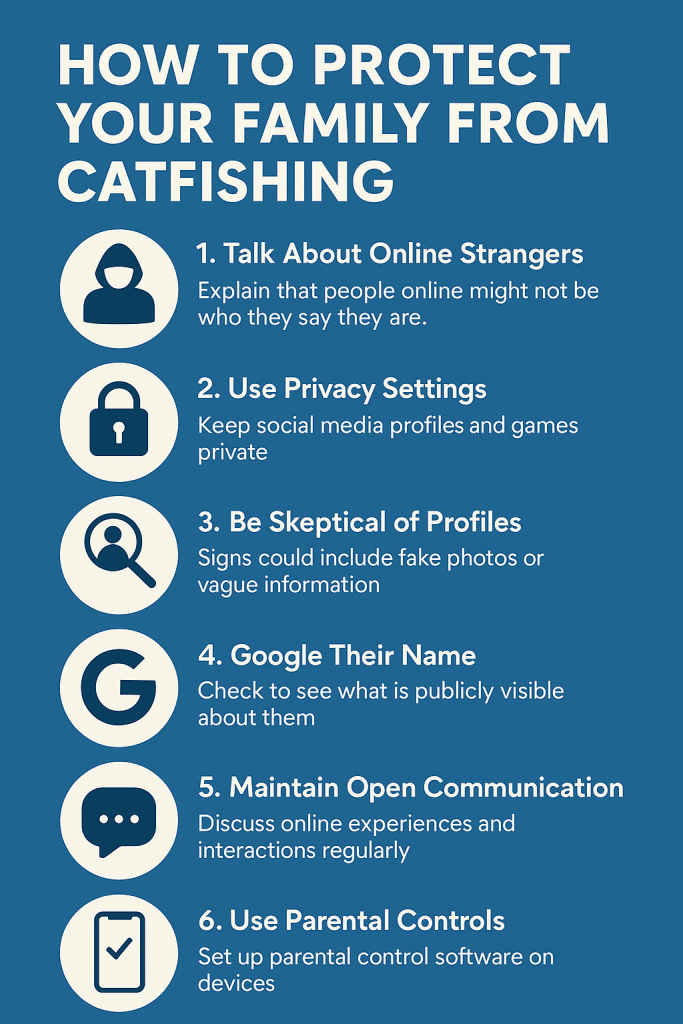An 18-year-old girl named Denali Brehmer recently made headlines after killing her best friend. She did it because a stranger she met online promised her $9 million in return. The man, who called himself Tyler, claimed to be a millionaire from Kansas—but he was lying. He had created a fake identity to trick her. This type of online deception is known as catfishing.
What Is Catfishing?
Catfishing is when someone creates a fake online identity to trick or manipulate others. These people often use fake photos and pretend to be someone else—usually to build false relationships, gain trust, or even commit crimes.
Catfishing doesn’t only affect teens—adults can be victims too. Some catfishers spend weeks or even months building trust before doing anything harmful.
Signs Your Child Might Be Talking to a Catfisher
It’s important to talk to your kids about these warning signs:
- The relationship moves too fast – The person says things like “I love you” quickly or tries to build a close bond without ever meeting in person.
- Fake or vague profile pictures – They might use someone else’s photos or stock images.
- Overly sweet or perfect behavior – If someone seems too good to be true, they probably are.
- Requests for money or inappropriate images – This could lead to blackmail, sextortion, or fraud. Teach your child to never share these, even with people they trust.
How to Protect Your Family from Catfishing
Here are 7 practical steps parents can take:

1. Talk About Online Strangers
Explain that people online might not be who they say they are. Even if they seem friendly, they could be lying.
2. Use Privacy Settings
Keep social media accounts private. On games like Roblox, turn off chat features so strangers can’t reach your child.
3. Don’t Trust Profile Pictures
Teach your child to question what they see. A quick image search on Google can reveal if a profile photo is fake.
4. Google Your Child’s Name
Search your child’s name online to check what information or photos come up. If anything seems unsafe, request removal from the site.
5. Keep Talking
Have regular conversations about online safety. Ask if anyone strange has contacted them and let them know they can always talk to you without judgment.
6. Use Parental Control Tools
Install trusted parental control apps to monitor usage and block harmful content. But don’t rely on tech alone—stay involved in their digital life.
7. Protect Sons and Daughters
Catfishing and sextortion affect both girls and boys. Make sure your sons know the risks, too.
Catfishing is real, and it’s dangerous. But with open communication, guidance, and the right tools, you can help keep your children safe online.








